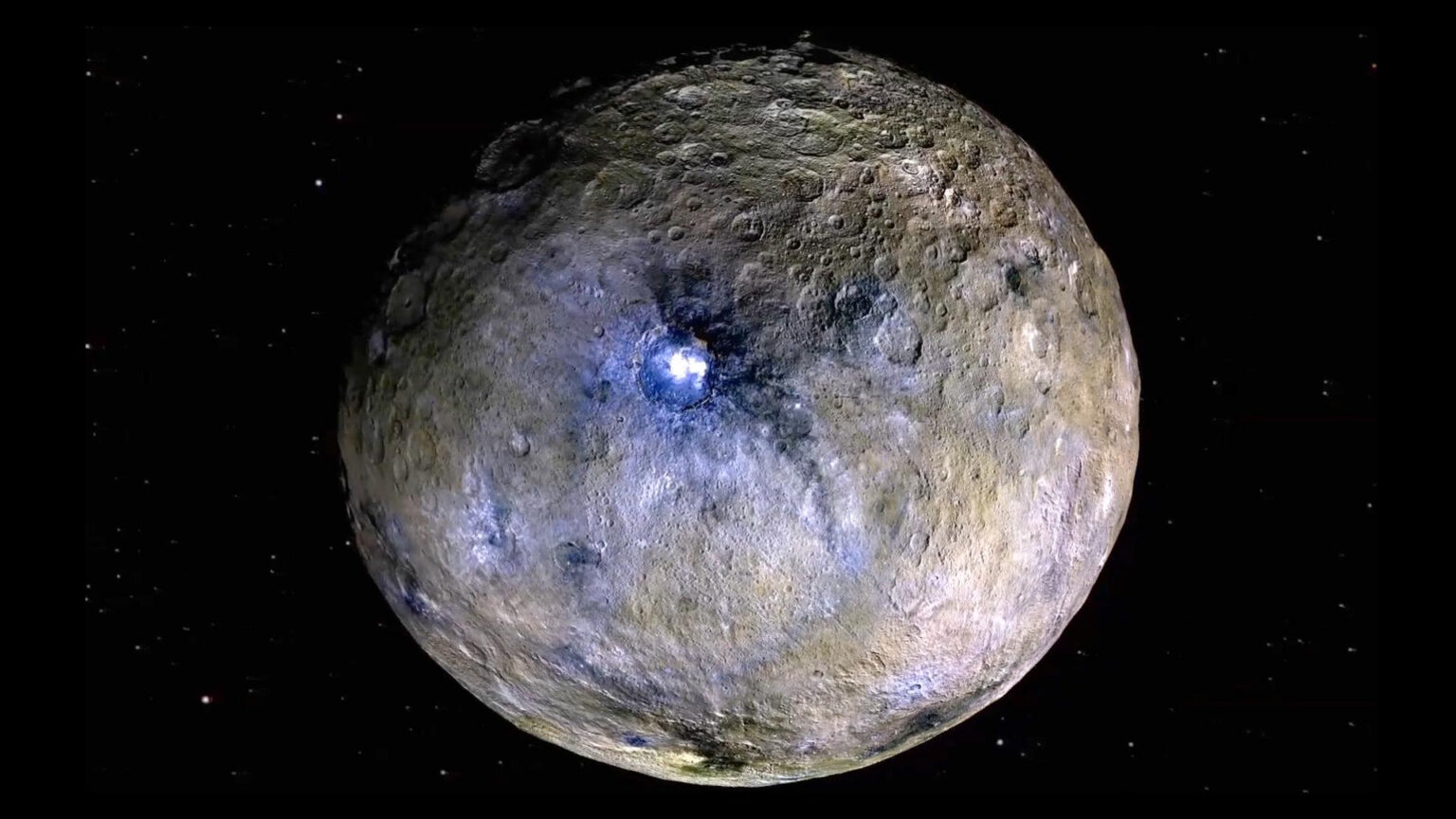Ceres is a dwarf planet located in the Main Asteroid Belt. The craters near its poles retain water ice. New research showed that it was formed only a few thousand years ago.

Mysteries of Ceres
Ceres, the largest asteroid in the solar system, hides a secret: extremely young ice deposits in permanently shadowed craters near its poles. If this sounds somewhat familiar, it’s because our Moon and planet Mercury also have such polar ice deposits that have been studied for decades.
The discovery made in 2016 posed a mystery: many craters in the polar regions of Ceres remain in shadow during the entire orbit around the Sun, which lasts 4.6 earth years on Ceres — and therefore remain extremely cold, but only some of them contain ice deposits.
Soon another discovery has given us a clue as to why this is happening. Ceres’ axis of rotation oscillates back and forth every 24,000 years due to tides from the Sun and Jupiter. When the tilt of the axis is large and the seasons are pronounced, only a few craters remain in shadow all year round, and these craters contain well-marked deposits of ice.
To determine how large the shadows inside the craters were thousands of years ago, scientists created digital terrain maps, and then performed ray tracing calculations on them in order to theoretically reconstruct the shadows cast on the bottom of the crater. The results are as reliable as the digital shape models on which they are based are reliable.
Maps of Ceres based on photographs
The Dawn spacecraft had a very sensitive camera that could distinguish the features of the shadowed crater bottom. Stereo images of sunlit regions are often used to build digital terrain maps, but creating a terrain map of a shaded area is a difficult task that has rarely been undertaken.
As part of a new study, PSI scientist Robert Gaskell has developed a new technique for reconstructing heights even in shaded areas of a stereo pair of images. These improved maps can be used for ray tracing to predict the size of cold, permanently shaded regions.
These more accurate maps gave an amazing result. It turned out that when Ceres reached its maximum axial tilt, which last happened about 14,000 years ago, not a single crater on it remained in the long-term shadow, and any ice in them had to quickly sublimate into space. This leaves only one plausible explanation: its deposits appear to have formed recently. The results show that all this ice has accumulated over the last 6,000 years or less. Considering that Ceres is well over 4 billion years old, this happened very recently.
An asteroid fragment could have collided with Ceres about 6,000 years ago, which created a temporary aquatic atmosphere. After the creation of the aquatic atmosphere, the ice condensed in the cold polar craters, forming bright deposits that we see today. In addition, glacial deposits could be formed as a result of the convergence of peculiar avalanches. Then this ice could only be preserved in cold, shaded craters. In any case, these events were very recent on an astronomical time scale.
Ice in the craters of Ceres
The authors of the study calculated the temperature inside the polar craters of Ceres, which no one had done before. The answer was unexpected: although these craters are cold enough to hold water ice, they are too warm to hold other volatiles.
Two circumstances contribute to this. Firstly, the inclination of the axis of Ceres, which is now 4 degrees, is 1.5 degrees higher than the inclination of the Moon, so most of the craters are illuminated by the sun and more light is scattered to the bottom of the crater. Secondly, it simply does not have permanently shaded craters in the polar zones, unlike our moon, where one crater is located almost exactly at the South Pole. For these reasons, temperatures on the dwarf planet are not as low as on parts of the lunar surface.
According to phys.org
Follow us on Twitter to get the most interesting space news in time
https://twitter.com/ust_magazine


